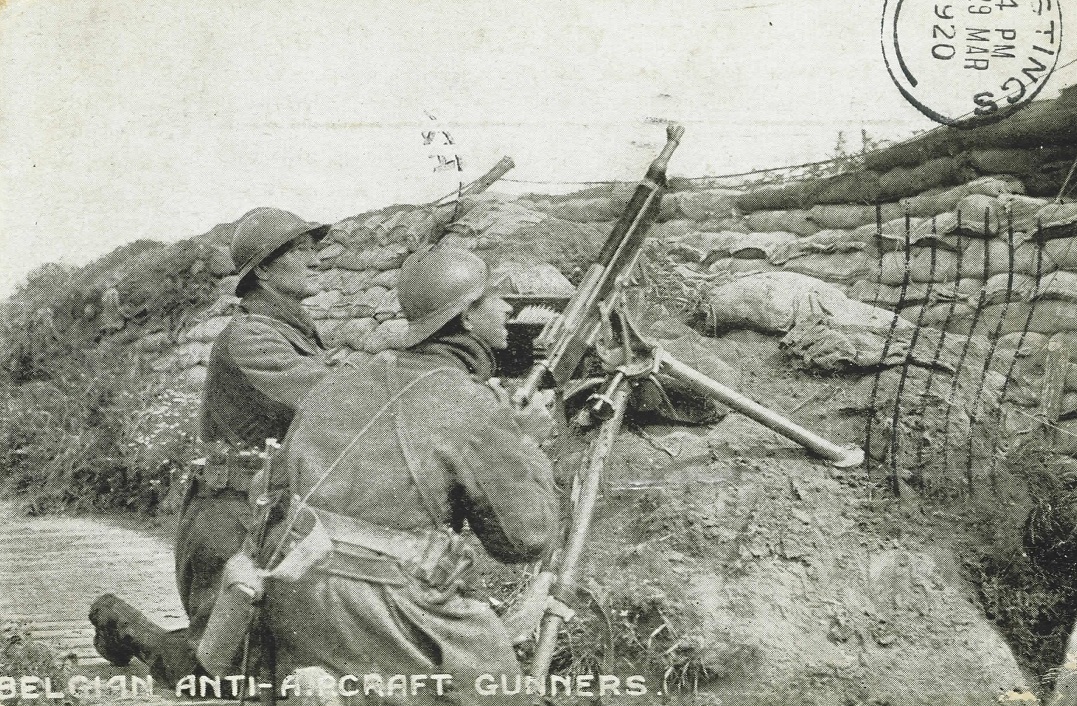
Well, it’s more effective than trying to hit ’em with a Hotchkiss Portative…but I bet they wish they had a proper anti-aircraft mount!

Well, it’s more effective than trying to hit ’em with a Hotchkiss Portative…but I bet they wish they had a proper anti-aircraft mount!
© 2025 Forgotten Weapons.
Site developed by Cardinal Acres Web Development.
“Downing planes,” perhaps?
My guess is the gun is being used to lay down a barrage at long range. That was a tactic commonly used with massed rifle fire before the war and the idea was carried over to machine guns. They were not only much better suited to the task, but now all you need to harass a battalion at long range is one gun and four men or less.
What is even more puzzling is the fact that the ammo belts appear to be the ones in the following link: https://www.libertytreecollectors.com/productcart/pc/viewPrd.asp?idproduct=235
Could it be that those ammo belts are not Swedish but Belgian after all?
I’m guessing that those are Swedish. Both countries used Mausers, so it would not be strange for them to have similar pouch systems. It’s also available from several other sellers (notably Numrich) as Swedish.
Also, I didn’t realize that the Potato Digger made any foreign sales. You learn something every day!
Most exciting picture of the “Potato Digger” I’ve ever seen is one where it is mounted on … an elephant !!! You perhaps can find that picture by googling it.
I believe the elephant photo was originally found by Max Popenker – you can see it here:
http://mpopenker.livejournal.com/1289739.html
I suspect it’s an indirect fire arrangement, as opposed to an anti-aircraft setup.
Indirect fire was a quite complex proposition requiring significant MG/artillery training, appropriate sighting and communication equipment, specfically made ammunition that was predictable for the use and other considerations. The Brits trained specifically with the Vickers guns and all necessary equipment to fire over the heads of advancing troops without endangering them. Just pointing the gun up in the air while below the parapet is NOT indirect fire by a long shot (pun intended 8^) ).
It is not at all clear what these gunners are up to, but it is far more likely that they’re just posing with the gun for the postcard, and the gun jus thappened to be in that position.
The postmark is British, almost certainly stamped at Hastings, and clearly posted in 1920. Obviously someone using up old postcards. I would love to know what’s written on the back; even if it’s: ‘Parcel arrived safe. Thanks. John’